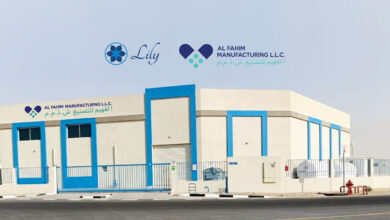Hybrid, Integrated & Digital Operating Rooms

Operating rooms have witnessed significant developments along with the surgical environment in general. Computer screens and robots have become part of modern operating rooms, so we shifted from traditional operations to minimally invasive surgeries that are performed with the minor surgical intervention possible. Today’s operating rooms are more efficient and flexible than ever and have turned into smart rooms.
The tremendous development in laparoscopic surgery and the accompanying technological innovations, along with the small and lightweight cameras and lens systems that produce more precise images, the development of diagnostic imaging devices and interventional radiology, as well as the development of information technology and the communications revolution are all factors that have radically changed the operating rooms.
This coincided with the development of the equipment used in the OR, such as anesthesia machines, operating tables, and their unique arms. In advanced operating rooms where laparoscopic surgeries are performed, advanced screens are sometimes hanging from the ceiling not to impede the surgeon’s movement in the operating room. They have unique arms that move depending on the surgeon’s position.
Types of advanced O.R.s
Quality is one of the essential components of healthcare services. Through the hospitals’ While they may sound similar, the differences lie in how technology and data work together. In general, hybrid, integrated, or digital operating rooms all aim to improve safety to positively impact patient outcomes and simplify workflows for the surgeon and surgical team.
Hybrid Operating Room
Hybrid operating room requirements are usually based on imaging, like C.T., MR, C-arm, or other types of imaging needed to perform complex operations that may require surgical intervention in addition to conventional surgeries. It combines advanced surgical techniques with state-of-the-art medical imaging technologies and interventional radiology, such as magnetic resonance imaging devices, C.T. scanners, and other devices that allow the surgeon to view diagnostic images directly during the operation, which has changed the methods of many complex surgeries.
The Use of medical diagnostic imaging devices inside the operating rooms has allowed the surgical team to obtain direct images during surgery, which led to a change in the surgical care provided to the patient.
Surgeons can now work together with anesthesiologists and radiologists to assess the surgery progress based on the direct diagnostic images taken during surgery.
It is now possible to perform high-precision surgeries that were impossible in the past.
Integrated Operating Room
With an integrated OR, personnel has fewer reasons to leave the operating theatre due to direct connectivity with other hospital equipment and information systems through an interface with the OR. This connection means an integrated OR can be more quickly and easily prepared for each scheduled procedure. Additionally, direct access to high-resolution imaging equipment like X-ray, CT, MRI, and other diagnostic equipment means patients do not have to be moved during surgery when imaging is required. Which, as a result, creates the opportunity for more minimally invasive surgeries.
One of the most significant benefits of OR Integration extends beyond the operating room as OR Integration connects and supports teams, processes and information to improve operative workflow. For example, OR Integration allows in-OR teams to share surgical videos and images with remote specialists for consultation, with classrooms of students for teaching applications, and real-time peer collaboration with another surgeon at a different location for procedure guidance.
Digital Operating Room
Digital operating rooms are equipped with high-resolution screens to display patient data and surgical steps, which allows for higher accuracy during surgical operations.
Digital operating rooms allow direct transmission of surgical procedures in international medical forums and conferences.
The digital work within the operating rooms contributes to making surgical decisions quickly. Also, it reflects positively on the patient’s health by helping him receive the appropriate treatment at the ideal time.
In digital operating rooms, surgical tools are used once only (Single Use), reflected in the surgeries’ success. The digital operating room aims to integrate the images, information, and workflow available in the hospital and the operating theater. All this data is then connected to and displayed on a single device. This goes beyond the simple control of devices and software, allowing also for the enrichment of medical data within the operating room.
Digital operating rooms are equipped with a digital system of advanced, high-precision control screens (touch or voice-controlled), that facilitate surgeons’ work, increase accuracy and reduce errors. Therefore, a digital O.R. setup functions as a central hub for clinical image data inside the operating room and for recording, collecting and forwarding data to the Hospital I.T. system, where it is centrally stored. The surgeon can control the data inside the O.R. from specified displays according to their desired setup and display images from many different devices.
Digital O.R.s also have an arm suspension system for laparoscopes and medical gases, which allows for more space, flexibility and the ability to adapt to the requirements of any surgery. This also allows the optimal Use of areas while significantly reducing the risk of infection.














